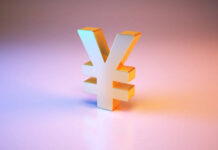The yen has weakened to the lowest level since 1998, with the USDJPY popping above the 140 handle. Through the week, the pair rose 1,9%. In a period of economic uncertainty, usually traders would expect the yen to get stronger on safe-haven flows. Is the yen no longer a safe haven? There’s more to the picture. And that could help us understand if there is a correction coming or the trend will continue.
The driving forces
In the short term, the dollar has gotten stronger ahead of NFP data. This is because traders are banking on the employment data to be strong, well above the “normal” 200K rate seen before the pandemic. With fast growth in jobs, the Fed would have free reign to keep hiking, pushing yields even higher.
So, from that we can see a potential source of a correction in the near term: if NFP figures disappoint. After the blow-out figure from last month, investors might be a little overly optimistic about a beat in jobs creation, which means even if the figures come in as expected, it could disappoint the more speculative traders.
The bigger picture
The short term dynamics are an example of the effects of the long-term situation. The major deviation between the two premier safe haven currencies is, broadly speaking, a difference in monetary policy. The US is facing high inflation, prompting the Fed to raise rates. Japan has relatively low inflation (even though it has poked above target recently), and rates have remained negative.
With the Fed pursuing an aggressive hiking policy, the yield spread has widened, making it attractive for carry trading against the yen. The potential for a reversal is that Japan starts experiencing inflation and forces the BOJ to start easing. The weaker yen translates into higher import prices, which in turn implies inflationary pressures. However, the global slowdown could also be translating into lower retail sales in Japan, which in turn minimizes the inflationary pressure. As a result, the BOJ can remain apart from the other central banks desperately fighting inflation, and instead work on promoting economic growth.
It’s all about the expectations
A lingering question might be: Sure, the Fed is raising rates, but inflation is much higher than interest. Doesn’t that mean a real negative rate?
Yes, it does. However, the inflation that we’re seeing now is in the past. It’s comparing prices now to prices a year ago. What matters for investors is how much inflation is expected over the next period. Fed tightening implies that inflation should get under control, meaning that holders of US bonds will get the benefit of higher interest rates and lower inflation. Meaning that forward yield expectations are still positive – or, at least, better than what traders might expect to get from yen bonds.
While the BOJ is on an accommodative track, inflation would have to increase substantially before rates rise. Meaning there is more inflationary risk in a Japan that isn’t actively fighting inflation, than in a US that is actively trying to get prices down. It isn’t that the yen isn’t a safe haven, it’s that the US has moved more into offering a better rate of return on fixed income.













